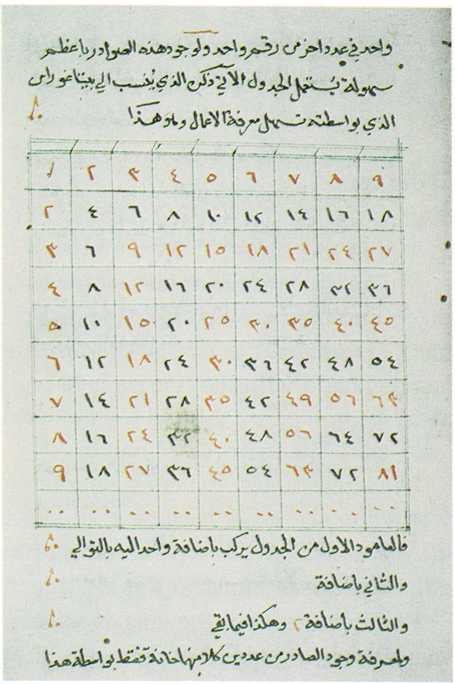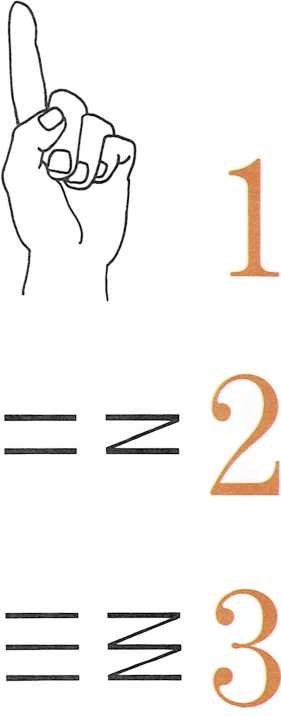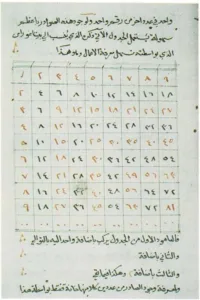
The numerals now used by Arabic-speaking people are not much like the
ones we call Arabic numerals. Only the 1 and the 9 are like ours, as you
can see in this multiplication table from a book written in Arabic.
A gift from Arabia
The Egyptians used pictures of things for their numerals. The Greeks
used the letters of their alphabet for numerals. The Romans used shapes
that look like fingers and hands. But where did our numerals come from?
Where did we get our wiggly 3 and rounded 8?
The numerals we use were invented by the Hindus in India, about two
thousand years ago. We don’t know why most of the numerals are shaped
the way they are, but we can make a guess about 1, 2, and 3. The numeral
1 very probably stands for one finger, just as in many other number
systems. The numeral 2 probably
started out as two straight lines that were later connected. And the
numeral 3 may have been three straight lines that were later connected.
As for the others, well, we just don’t know.

The Hindu numerals were adopted by the Arabs. When the Arabs conquered
Spain, about 1,300 years ago, they brought these numerals with them.
Because the Arabs brought them, they became known as Arabic numerals.
At that time, the people of Europe used Roman numerals. And for several
hundred years, they went right on using them. Anyone who had to do
arithmetic almost always used an abacus. When you use an abacus, it
doesn’t matter what kind of number system you use.
But for written arithmetic, the number system can make a big difference.
It isn’t too difficult to do addition and subtraction with Roman
numerals, but they are very clumsy for multiplication and division. This
is because they have no place value. On the other hand, in the Arabic
number system, the numerals do have place value. And this makes it very
easy to work out written problems.
Gradually, European mathematicians began to use Arabic numerals. Still,
it wasn’t until the first printed books appeared—in which Arabic
numerals were used—that most people began to learn these new numerals.
Our numerals didn’t always look quite the way they do now, though.
Here’s how they looked about a thousand years ago:


